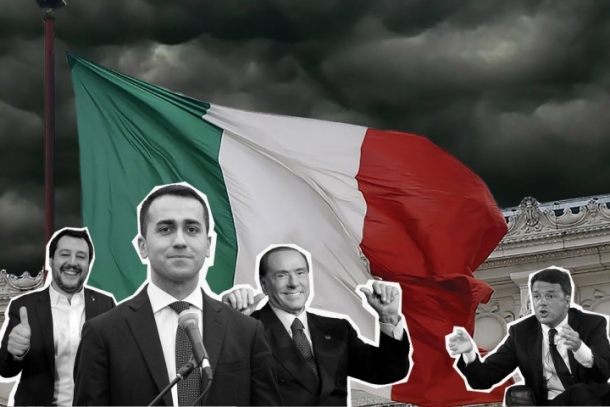The Italian elections – a political earthquake in the true sense of the word – have produced what had long been predicted: a hung parliament, with no party, or coalition of parties, capable of expressing a majority government. Serious bourgeois commentators have lamented the fact that more than 50 percent of the electorate voted for ‘populist’ anti-establishment parties, while those parties that the system has rested on for the past 25 years have been seriously weakened.
The results are the following: centre-right coalition 37 percent and 260 MPs; Five Stars Movement (M5S) 32.68 percent and 221 MPs; centre-left coalition 22.85 percent and 112 MPs; Liberi e Uguali 3.39 percent and 14 MPs. To form a majority government in parliament would require 316 MPs, and none of the main forces in these elections achieved that. Thus, a period of instability opens up as negotiations to patch together some kind of coalition are dragged out.
The problem is that no one knows how any functioning coalition can be built. The centre-right needs to find 56 MPs who would be prepared to support them, whereas the M5S would need to find 95. There is much speculation now about what kind of government will emerge. There could be a M5S-Democratic Party coalition, a deal between the M5S and the League or even some arrangement between the Democratic Party and the right.
All of these, however, create new problems and are not the basis for forming a stable government. Another option being discussed is the formation of a short-lived coalition government whose sole purpose would be to change the electoral system, yet again, in order to introduce a mechanism that would produce a parliamentary majority.
This comes at a time when the Italian bourgeoisie requires a strong government capable of further cutting back on the welfare state and workers’ rights in general, in order to tackle the huge black hole in the state finances (equivalent to 132 percent of GDP), a failing banking system and a stagnating economy that has not even been able to recover to pre-2008 crisis levels.
In the past they thought they had found in the Democratic Party the force they needed to guarantee their interests, and when that failed they could call back in Berlusconi. The problem is that the big losers in these elections were precisely the Democratic Party and Berlusconi’s Forza Italia. This is part of a wider international phenomenon that has seen the so-called centre collapse. The reason is that these are the parties most linked to the austerity of the past period.
The centre-right and the surge of the League
The bulk of the centre-right is made up of Berlusconi’s Forza Italia and Salvini’s League. The League used to be called the Northern League and campaigned for a separation of the north from the rest of the country, referring to southerners as lazy and incompetent. That restricted its electoral base to the north and made it a small force in national politics. It has now recycled itself as a right-wing, racist, anti-immigration, conservative party and has tapped into the fear of a section of the population at the ‘constant’ arrival of migrants from Africa and Asia. One of its main slogans was ‘Italy for the Italians’. Its vote went from 4 percent in 2013, concentrated in the north, to 17.6 percent with a more national spread today. Berlusconi’s party Forza Italia, on the other hand, has gone from 21.5 percent in 2013 to 14 percent today.
Berlusconi has paid the price of attempting to appear as the more responsible ‘statesmanlike’ figure within the centre-right coalition. As a clear sign of desperation, he was praised by the more serious bourgeois, in Italy and in Europe, as the man who could save Italy from populism, which included the League that he was in an alliance with.
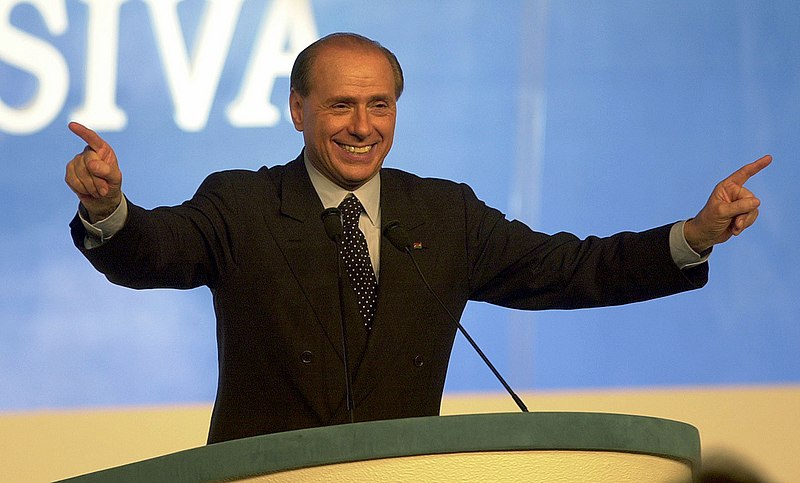 Berlusconi paid the price of trying to be the 'statesman-like' figure. The centre-right is now dominated by the League / Image: alessio85
Berlusconi paid the price of trying to be the 'statesman-like' figure. The centre-right is now dominated by the League / Image: alessio85
What the bourgeois fail to understand is that in present-day conditions in Italy a large layer of the population has had enough of so-called statesmanlike figures. The EU and the euro are seen by many as the source of the problems afflicting working people, and therefore any politician defending the EU and euro is not going to do well in the popularity ratings. The crisis is severe and people want change, not the same old politics. It is precisely those parties that offer ‘extreme’ policies that do better in these conditions. So-called ‘moderates’ – and Berlusconi was seen as the moderate within the centre-right coalition – suffered electorally.
In this context, Salvini has been beating the drum about Italy being for the Italians and has been promising to repatriate hundreds of thousands of immigrants. In the conditions of growing unemployment, the right wing have pressed home the message that if the immigrants are sent home, things would get better for Italians. The tragedy is that there is no real viable left force capable of explaining that such divide and rule policies of the right only serve to weaken the working class. In the absence of such a force, the xenophobic, racist message has had an impact on significant layer of the population.
Thus, the centre-right is now dominated by the League and not Berlusconi. This poses a problem, because during the election campaign Berlusconi had clearly stated that whichever party within the centre-right won the most votes would get the position of prime minister – if the right can form a government, of course. That means Salvini can rightly claim the role of leader of the centre-right. Berlusconi, far from protecting the bourgeois class against ‘populism’, has actually facilitated the rise of the League. The problem however, remains that Salvini may not get the position of premier that he aspires to, as the centre-right as a whole does not have the necessary majority.
Five Stars does better than expected
The Five Stars Movement (M5S) did much better than opinion polls were predicting, winning over 32 percent of the vote, up from its 25.5 percent in 2013. The Five Stars Movement has now emerged as the biggest single party in parliament. It stood on its own, as it refused to form electoral coalitions with any other force, and it has clearly won the protest vote and has given expression to the pent-up anger against the establishment.
As the biggest party, it has the right to be given the task of forming a government. The President of Italy, Mattarella, has the role of nominating who should be prime minister. He looks at the makeup of parliament and seeks a candidate that he believes can form a working majority. That means that at some point he will have to call the M5S leader Di Maio and ask him to investigate whether he can muster a majority in parliament.
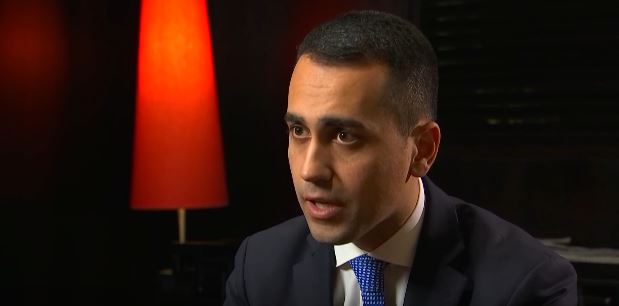
The Five Stars Movement won an overwhelming vote in the south and among the youth. In the south its vote was between 45 percent and 55 percent in the different regions, and among the youth its vote was 43 percent, according to an SWG study. This is very significant, as the youth and the south have suffered most from the crisis of capitalism in recent years and have been hit hard by unemployment. It also did well among industrial workers, casualised workers and the layers of the middle class that have been ruined by the economic crisis.
In some areas of Italy unemployment is very high. In the former mining district of Sulcis in Sardinia, for example, unemployment stands at 30 percent and youth unemployment is at 70 percent. In these areas people don’t want to hear all the old rhetoric of the established parties. They are suffering now and want something serious to be done about their terrible social and economic conditions.
Many workers who used to vote for the Democratic Party, seeing in it the continuation of the tradition of the old Communist Party, but this has now changed. They feel betrayed by the Democratic Party and have shifted to the Five Stars. When a TV reporter asked workers who they had voted for in the Sulcis region of Sardinia, most responded Five Stars. When asked if this were not a leap into the dark and that it might make things worse, one worker responded “how can it get any worse than what we have now?”
Thus, the vote for the Five Stars is clearly a vote of protest and a way of sweeping away all the old parties who are seen as responsible for this situation. The more-than-ten-million Italians who voted for the Five Stars were voting against the system as a whole.
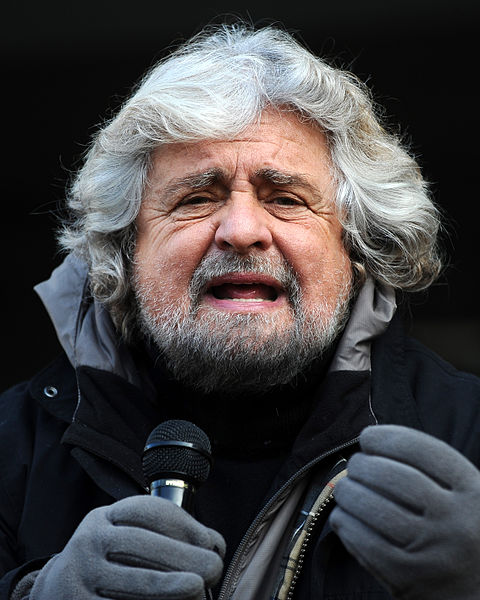
However, what does the Five Stars movement have to offer concretely? It has built up its support by presenting itself as an anti-austerity party, a party that questioned the role of the EU and even raised the idea of a referendum on the euro. It has also built up its position with its anti-corruption rhetoric. The image it has cultivated is one of a party that will sweep away the old system.
However, the bigger it became, and the closer the prospect of actually forming a government has become, the more ‘responsible’ its leaders have become. Gone is their talk of leaving the euro. There is no more talk of a referendum on the euro. Di Maio, its leader, on Tuesday evening gave a speech in which he repeated several times the word ‘responsible’. He stated they are a responsible party and will do what is right for Italy and Europe. He added that they are prepared to talk to the other parties, which is very different from their previous position of refusing to work with anyone.
This may also explain why the president of Confindustria (the bosses’ union), Vincenzo Boccia, has come out saying that “the Five Stars do not frighten us”, adding that they must not undo the laws that have so far been introduced by the Democratic Party, such as the Jobs Act which has served to render working conditions far more precarious. He has also warned the Five Stars not to introduce measures that would push up the public debt even further. But Boccia’s statement is like a certificate of suitability that the bosses have issued for the Five Stars, a party they can do business with. The fact that the Five Stars have an anti-Trade Union stance helps in this sense.
The Five Stars have come out strengthened, but it is clear that they are preparing their own undoing in the coming period as they are forced to deal with the question of how to run a capitalist economy.
The flop of the far-right
Two groups that could be described as fascist stood in these elections, ‘CasaPound Italia’ and ‘Italia agli Italiani’ (a coalition of Forza Nuova and Fiamma Tricolore). Having seen a certain success in an earlier local election on the outskirts of Rome, CasaPound believed they could get some MPs elected in the general election. In the end they failed to get anywhere near the 3 percent threshold. The vote was still significant, given the open fascist orientation of these lists, but was well under their expectations. CasaPound won 0.94 percent, while Italia agli Italiani won 0.38 percent.
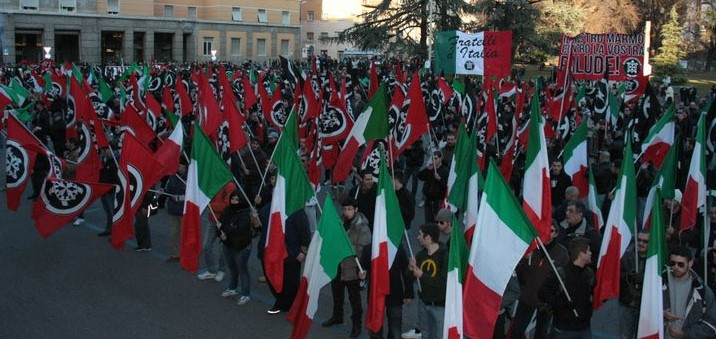 In a worse-than-expected result, CasaPound won 0.94 percent and Italia agli Italiani 0.38 percent / Image: PD Utente
In a worse-than-expected result, CasaPound won 0.94 percent and Italia agli Italiani 0.38 percent / Image: PD Utente
Immediately after the results were released, the leader of CasaPound complained that the media had ignored them and given them no publicity. This claim shows the demoralising effect the election results had on CasaPound’s leadership, but it is far from true, as they had a lot of publicity during the election campaign in terms of media projection. For instance, when a racist (and former Northern League candidate) shot at African immigrants in the streets of Macerata there was a lot of talk about the fascist far-right. The truth is that support for the open fascists is very weak. There is also the fact that anyone who wanted to vote for openly racist parties could vote either for the League or their coalition partners, Fratelli d’Italia [‘Brothers of Italy’], or even, to a certain extent, for the 5 Stars Movement, which also adopted an anti-immigrant stance.
Having said that, there was a small-but-significant increase in the vote of the far-right. In 2013 the combined vote of two far-right groups was 92,000 votes (0.27 percent). This time the combined vote of the two fascist lists was 429,000 votes (1.32 percent). CasaPound was the group that benefited the most with its 305,000 votes.
These figures give the real picture of the so-called ‘fascist threat’ in Italy. These groups are marginal and could be easily fought back and isolated, provided that a much bigger mass movement against racist attacks and the fascists were effectively organised. They do present a threat as violent groups used to attack left activists and immigrants. They also play a role in whipping up a general mood of racism and xenophobia among a layer of the population.
The demise of the centre-left
The big loser in these elections is the centre-left coalition centred on the Democratic Party. The centre-left won less than 23 percent, down from its 29.5 percent in 2013. In the 2014 European elections the Democratic Party won over 40 percent. That was when it was riding high and Renzi felt he had the wind in his sails and no one could challenge him. The Democratic Party continued to push through a series of anti-worker legislation and severe austerity measures, and in these elections it paid the price for those policies, winning a mere 18.8 percent, not much more than the League, and losing almost three million votes since 2013.
This result confirms the gradual, drawn-out process that has been taking place since 2014. In this period the Democratic Party had already received a blow in the 2016 referendum, when over 60 percent of the electorate rejected Renzi’s attempt to change the constitution, in an attempt to change the electoral system, precisely to avoid the Five Stars Movement emerging as the strongest force in parliament. This was seen for what it was and the south, the workers and the youth in particular used the referendum to give Renzi a huge slap in the face.
Renzi resigned as premier, but his government continued under Gentiloni, with practically the same ministers. Renzi was seen as still steering the government and he became a hated figure, both from the left and the right.
 The crisis of the Democratic Party poses a problem for the bourgeoisie, who spent years building up the party in their image / Image: Francesco Plerantoni
The crisis of the Democratic Party poses a problem for the bourgeoisie, who spent years building up the party in their image / Image: Francesco Plerantoni
In spite of all this, Renzi moved to strengthen his grip on the Democratic Party, pushing to one side the minority faction of MPs that came from the old Communist Party, provoking a series of splits of MPs, which was to give rise to the list called Liberi e Uguali [‘Free and Equal’]. This included some former Communist Party leaders, such as D’Alema who was prime minister in 1998-2000. The aim of this list was to save the careers of the minority pushed out by Renzi, but without breaking openly either with the policies they defended in the past, or with the possibility of collaborating with the Democratic Party. Opinion polls were indicating they might get around 6 percent. In the end they did very badly, winning a mere 3.4 percent, only just above the 3 percent threshold and D’Alema doing very badly in his hometown. Its leader, Grasso, came out during the election campaign suggesting a coalition government between the Democratic Party and Berlusconi’s Forza Italia, with themselves as the arbiter! This group will now most likely break up as each of its MPs looks to saving his future career, some of them possibly returning to the Democratic Party.
The Democratic Party is now facing a serious crisis. Renzi has offered his resignation as party leader – but is not resigning yet! His arrogance has no limits. He says he will stay as leader until a government is formed. The reason for this is that he believes the party should not enter any discussion about forming some kind of coalition – but should stay in opposition. The logic behind this is clear. If there is any chance of preserving the Democratic Party as a useful tool for the bourgeoisie, this can be done by staying in opposition and leaving the others to continue with the austerity measures.
That is all very good in theory, but it doesn’t solve the immediate problem facing the capitalists of guaranteeing a government in the short term. There is a significant section of the party that wants to open to the Five Stars and start negotiations about a possible collaboration between the two parties. Renzi has challenged his opponents in the party to come out into the open and state where they stand. On Monday there is a meeting of the leading body of the party where a showdown may well take place. What we are seeing is the possible split of the Democratic Party, where fragments would be used to support one government or other. In the meantime, the party will continue to decline and could even disappear as a relevant force from the scene of Italian politics.
The weakness of the Democratic Party and the demise of Renzi represent big problems for the Italian bourgeoisie. They had built the party up painstakingly over a long period to be the direct voice of the capitalist class. The problem today is that whomever governs and attempts to run the system must abide by the rules of the system. The ‘autopilot’ is always at hand guiding whomever is in office towards austerity, cuts in spending and a generalised attack on the working class.
What is left of the left?
As explained in a previous article, what is left of Rifondazione Comunista promoted a list called Potere al Popolo [‘Power to the People’] to stand in these elections. In spite of the opinion polls indicating that they would get around 1 percent, its promoters had built themselves up as the new force on the left. They whipped themselves up into a frenzy believing they could go above the 3 percent threshold, and some were even dreaming of bigger things. This prompted some to speculate whether here at last we had the Italian Podemos, or the Italian France Insoumise.
The Italian Marxists understood that such a list had very little chance of emerging as a credible alternative. Its main component was Rifondazione Comunista, but the party is now hardly the shadow of what it used to be in terms of membership and influence. This party supported the centre-left in the past and even entered one of its governments, with the excuse that they had to do this to stop the right wing. The result was that in 2008 Rifondazione lost all its MPs, and has been in decline ever since. It has become nothing more than a reformist sect. What they refused to understand is that you cannot rebuild the left in Italy with people who are tainted with the policies of the centre-left, and with the same old policies. What is required is a clear class policy that refuses any collaboration with the so-called centre, with parties that defend the interests of the capitalist class.
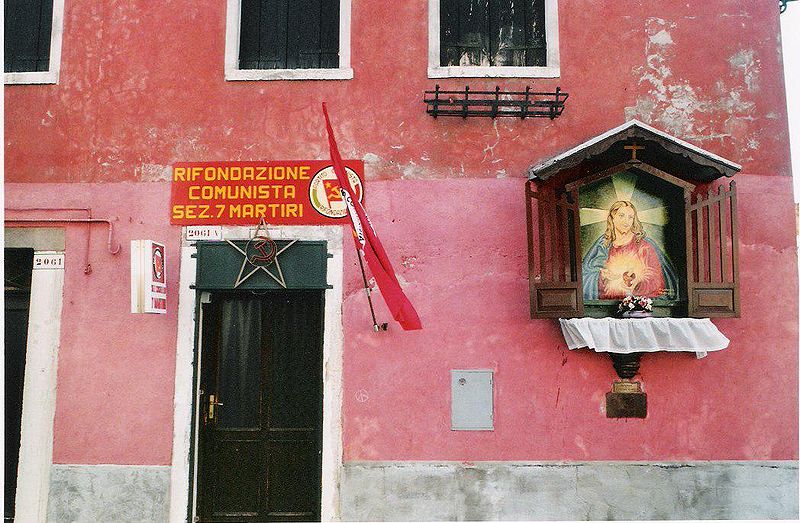 Rifondazione Comunista is a shadow of its former self / Image: Wikinade
Rifondazione Comunista is a shadow of its former self / Image: Wikinade
But they are incapable of breaking with the old policies. They have continued to uphold Tsipras as a model for the left in Italy, which says everything about the nature of this force. And it explains why they did so badly in these elections. If we compare Power to the People’s vote to the Rivoluzione Civile list of 2013, also promoted by Rifondazione Comunista, we see that they lost more than half their votes. In 2013 Rivoluzione Civile won 2.25 percent and 765,000 votes, while Power to the People in these elections won only 1.1 percent and 361,000 votes. This is the price they pay for years of reformist class collaboration.
The tragedy of the Italian situation is that the Democratic Party – backed in the past by Rifondazione – have given the word ‘sinistra’ [left] a bad name in the eyes of the mass of working people. ‘Sinistra’ is linked to Renzi and his austerity policies. It explains why a party like the League can portray itself as a party of the working class, saying that the “Left” does nothing for workers!
The revolutionary left
In effect, the old traditional left forces in Italy have been all but smashed by events. Decades of class collaboration led first to the dissolution of the old PCI and what emerged from that was absorbed into what is now the Democratic Party, while the promoters of Rifondazione Comunista failed to build a genuine Communist Party in its place. The Italian working class has gone from having a powerful two million strong Communist Party to being left with no party at all. Power to the People was a failed attempt to resuscitate a reformist formation in Italy.
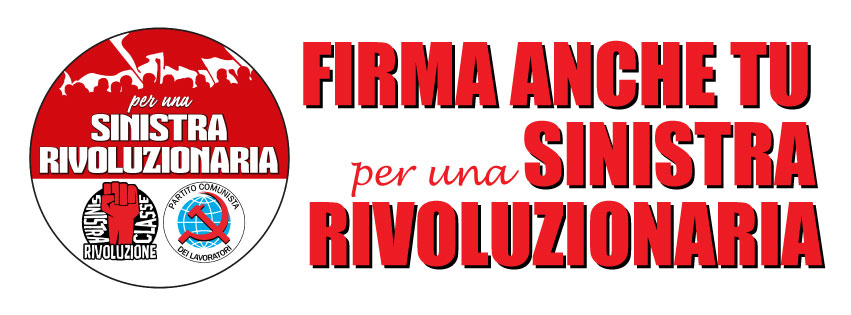
We explained in a previous article why the Marxists in Italy decided that in these conditions it was necessary to stand an independent, revolutionary left platform. They had no illusions that they would get a large vote. They are still too small to be a significant factor in the situation, especially in the electoral arena. However, not to have stood would have reduced them to a passive role, of “observers” commenting on the situation. Having their own list gave them an instrument with which to play an active role in the elections and spread their ideas as widely as possible.
In terms of raising their profile, the campaign was successful. They were able to speak on TV election campaign programmes, from Claudio Bellotti’s interview on RAI 2, that we referred to before the elections, to a number of local TV, radio and newspaper interviews. The comrades went to the schools, universities and factories and took their message to the workers and youth. Where they managed to speak, they had an impact on people. They were seen not as crazy ultra-lefts but as serious people who knew their facts and figures, who had an analysis of the Italian and world situation, and who had a programme that answered the problems of the working class.
This, of course, is not enough to win elections. The bulk of workers and youth who wanted to vote for a force that had the numbers to offer an alternative voted for the Five Stars. This is an objective process that no one can cut across. Many workers voted for the Five Stars with big illusions that this was the way to change things. They will be bitterly disappointed and when it sinks in that the Five Stars also betray their electorate, then the situation will become explosive, but that is the music of the future.
In terms of votes, the result is a very modest one. In those areas such as Milan, Naples, Modena and a few others where the Marxists have a base, with important trade union positions, shop stewards and so on, they got a decent vote. The Sinistra Rivoluzionaria list overall won 32,500 votes. It is true that they were only able to stand in 60 percent of the constituencies, but nonetheless it is a very modest vote. But the main aim of the campaign was not so much to win a large amount of votes in the ballots, but to build links with a layer of workers and youth who are looking for a revolutionary alternative and use the election campaign as a drive towards building the forces of Marxism. In that respect the campaign has achieved an important success.
There was another competitor on the left, and that was the Partito Comunista led by Marco Rizzo, whose symbol was the red flag and hammer and sickle. This is an openly Stalinist organisation with links to the Greek KKE. Marco Rizzo used to be a leading figure in Rifondazione before it split in 1998 and was an MP between 1994 and 2004 and a Euro-MP from 2004 to 2009. This party won 103,000 votes (0.32 percent), still very small and marginal in Italian politics.
There is a layer of old left activists in Italy who are now in a deeply depressed mood. They see everywhere reaction and hopelessness. They fail to understand why the Italian left has fallen to such depths. Many of them still cling on to the very ideas, policies and methods that led to the present disintegration of the left parties.
The mood among the Marxists of the IMT in Italy, on the other hand, is one of confidence. That may appear strange to the average left activist, but that is because they do not have a real understanding of the period we have entered. They only see the reactionary side of the election results. They fail to see that a huge section of the Italian population actually voted against the old establishment. Because of the historical failure of the left it is mainly the Five Stars that has tapped into this mood – and partially also the League. What they fail to understand is that once the Five Stars is tested, the millions who placed such big hopes in them will become potentially the base for a future party of the working class.
The Marxists have confidence in the working class. It will learn from events and as it learns it will look for something better than either the League or the Five Stars. The task of the left is to prepare an alternative that is capable of becoming a point of reference for the working class. By intervening in the elections, the Italian Marxists attracted the attention of a wider layer of people looking for an alternative revolutionary policy. They have already started involving this layer in their activities and are strengthening the Marxist Tendency. This was the main aim of intervening in the elections with their own list.
